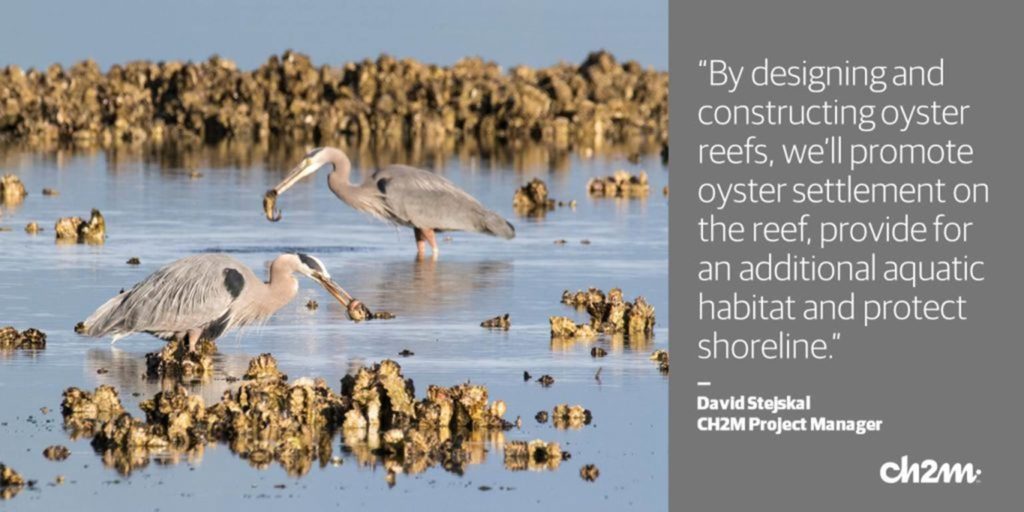The Nature Conservancy shares CH2M’s passion for natural infrastructure as a viable way to increase coastal and climate change resilience, so we’ve been collaborating with scientists and engineers on these types of projects to examine nature-based solutions for risk reduction. The Conservancy selected CH2M for this project because of their in-house ecology, modeling, coastal engineering, and design experience on oyster habitats and living shoreline projects, combined with our local knowledge of the Gulf of Mexico.
Healthy oyster reefs and other estuarine and marine habitats help protect coastlines from wave damage and erosion, but 85 percent of oyster reefs have been lost worldwide, largely through overharvesting, pollution, habitat loss, and other factors, making them the most severely affected marine habitat on Earth. This restoration project will begin to restore oyster reefs in East Bay while also providing shoreline protection, nursery, and a foraging habitat for other aquatic life.
“Our CH2M and Conservancy team has proven themselves on multiple living shoreline projects and is recognized by communities and clients in the Gulf as the go-to experts,” said Brandy Wilson, program manager for CH2M’s collaborative agreement with The Nature Conservancy. “Jeff DeQuattro from the Conservancy and our own David Stejskal make a great team and know how to foster amazing collaboration among engineers, ecologists, and area stakeholders.”
Phase 1, funded by the National Fish and Wildlife Foundation Gulf Environmental Benefit Fund, includes 3 years of pre-restoration monitoring, project design, and permitting to develop the most effective and efficient blueprint. Reef construction will follow in later phases.

